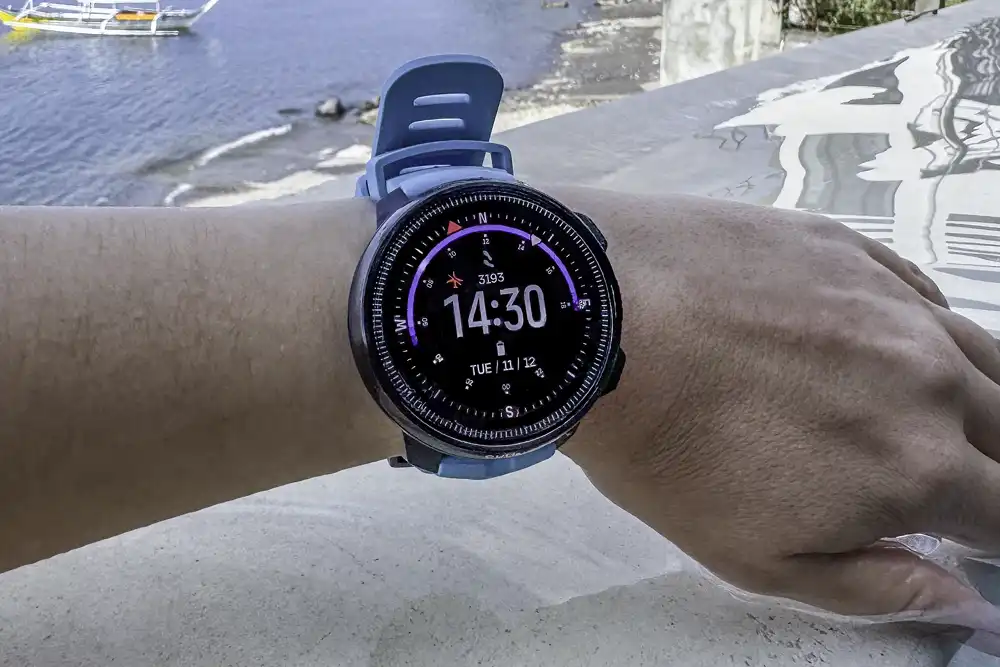

The Suunto Ocean was the Finnish brand’s first new dive computer for some time – but does it measure up to previous flagship models? Award-winning underwater camerawoman Jenny Stock put it to the test
By Jenny Stock
My main observation about the Suunto Ocean dive computer is that it is just small enough (49.9 x 49.9 x 13.2 mm / 1.96×1.96×0.52″) to double as a sports tracker / watch on my small wrist.
As a primary purchase for a dive computer, it suits all my needs with added extras. The bonus features would result in it getting more use than my previous Suunto Gekko dive computer (which – as a side note – is still going after 24 years, so Suunto is definitely doing something right in terms of durability!)
The Suunto Ocean’s 50mm AMOLED colour display is gorgeous – it’s crisp and bright and a pleasure to look at. The screen is sapphire glass (crystalline ceramic) and a touch screen, with three buttons on the side large enough to easily use with gloves on.
I love that I can select from fourteen different watch faces – I opted for my favourite colour, purple – however, strap choice is limited and I haven’t found a perfect matching wristband yet.
The straps it comes with are soft and comfortable and each set consists of three pieces so you can go long, for over drysuits, or short, for everyday use, without having to snip at them with a pair of scissors.
Diving with the Suunto Ocean
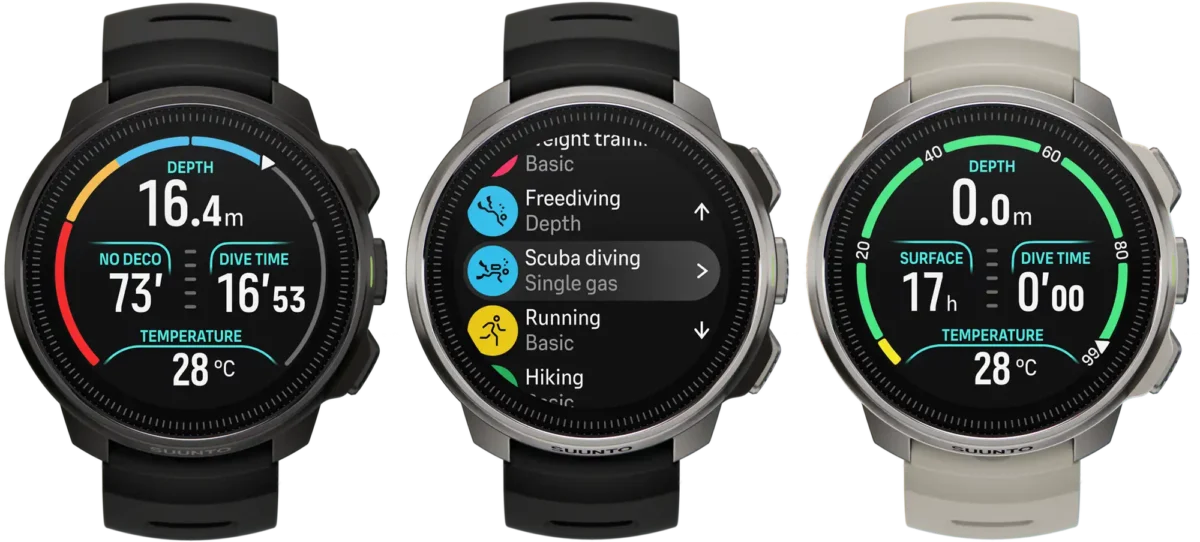

All the typical depth, time, temperature and safety stop detail is present and although you might need to scroll through some of the data, it’s all clear and bright, easy to use and read and feels quite simple. There is a compass built in, although it needed a software update to work underwater.
Over the numeric display is an obvious coloured arch displaying your time to decompression – green for no deco; orange when you get close to your NDL and red if you break it.
Suunto is a conservative brand and this computer is designed for recreational use. However, if you’re that kind of person (I’m not) you can get into the settings and start twiddling options like gradient factors.
Personally, I’d rather keep it as safe and simple as possible, so I’ll be meandering in my lovely green and orange boundaries. You can programme in high altitude dives if needed.
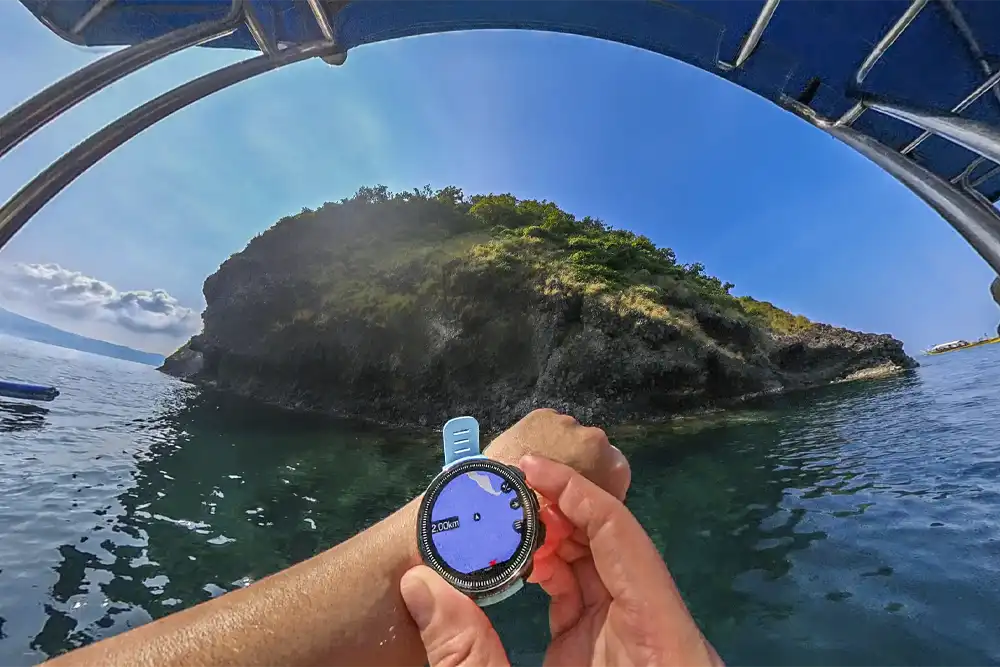

The menus in dive mode are great with my main pro being the ability to program in a range of different gas mixtures. There are single and multi-gas dive modes and you can change the gas you are using throughout the dive.
You can monitor real-time gas usage when paired with Suunto Tank POD (although I didn’t have one to test) and can link to up to 10 PODS to monitor your buddies’ tank pressures and air consumption rate, if you stay close enough to each other.
The Ocean is rated to a depth of 60m/196ft and although other brands of watch-style activewear computers operate to 200m/656ft, the Suunto’s capabilities are absolutely perfect for me.
I’m never going to use a Closed Circuit Rebreather or trimix unless something very odd has happened in my life, so the Ocean not having technical options isn’t a problem for me – like most recreational divers, I just need a device that is easy to read and operate.
Underwater the computer gave me vibration alerts, which I loved.
Suunto Ocean battery life
The Ocean’s battery life is excellent. I charged the computer for the first time in the UK and headed to the Philippines for three weeks. The first alert to charge the computer came after seven days of diving, five times a day.
Compared to a product like the Apple Watch which lasts eighteen hours on a single charge, this is great. Not as good as my old-school Gekko, which lasts a year on one battery – but this new computer has more demands so it’s understandable.
You can only charge the computer with Suunto’s dedicated USB cable, which Suunto has opted to supply with a USB-A connector. I’ve got to a point where all my other underwater tech charges via USB-C, so I had to dig my old adapter out.
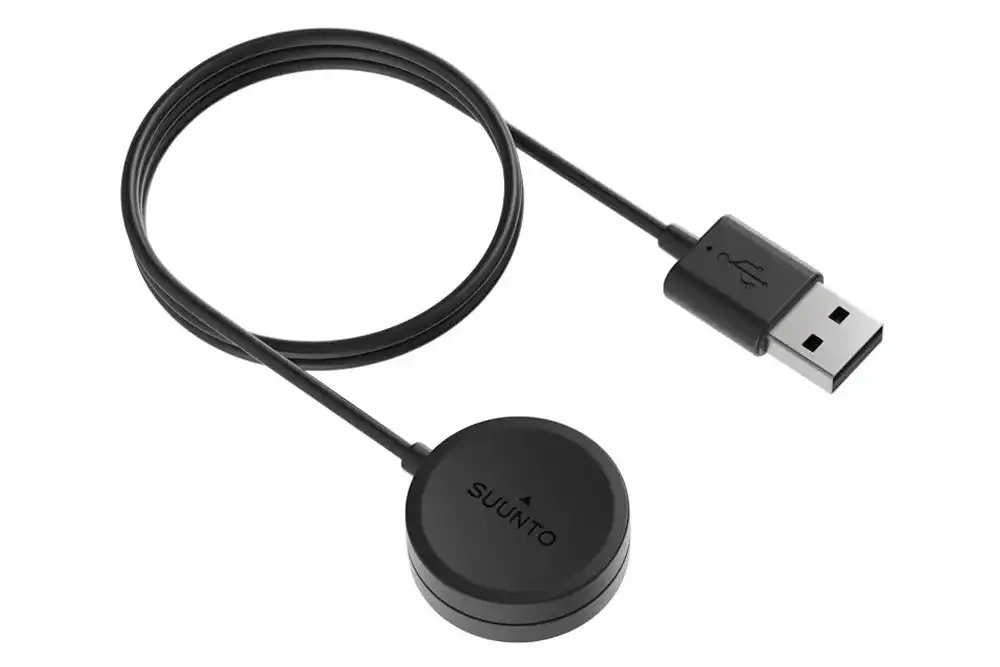

Dive logging with the Suunto app
The Ocean computer links beautifully with my iPhone, and once connected to the Suunto app (which is also available for Android devices), you have some nifty features at your fingertips.
I downloaded Google Maps of the Philippines for free via the inbuilt Wifi (the computer has 32GB offline storage available for this purpose), and I loved looking at the colourful maps before and after dives both on my computer and on the app.
Dives are logged as GPS-mapped 3D profiles, which look great and make it a lot easier to re-locate interesting features when you dive the site again.
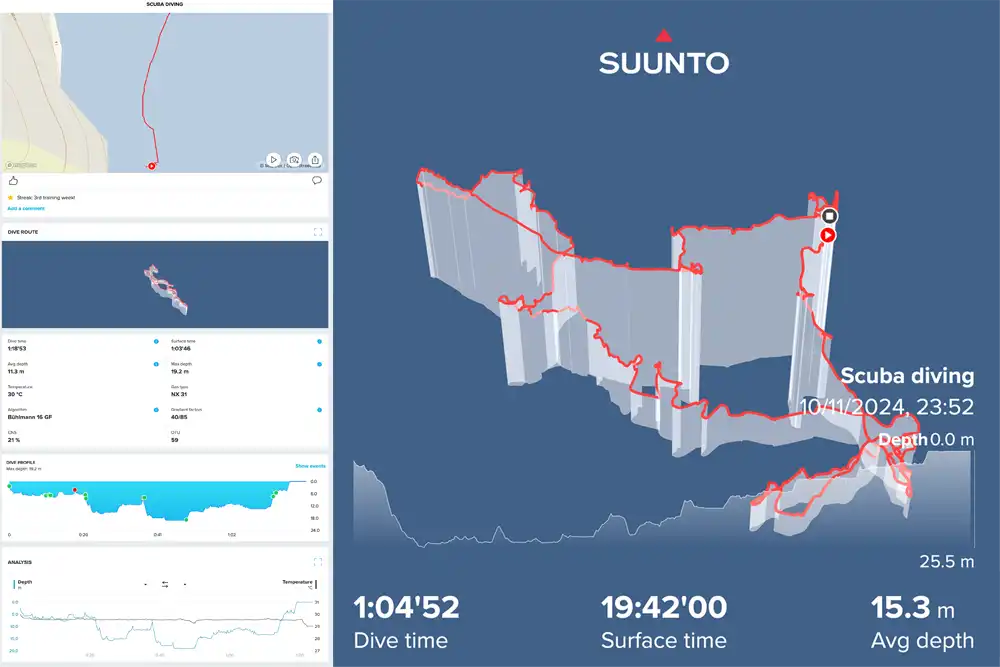

Suunto Ocean topside
Away from diving, I receive all my push notifications and can see the first line of my incoming messages. However, there’s no security to the watch so anyone could dip in and read those if I were to leave it lying around.
Also, while writing this review I heard a loud beeping and a flash of yellow which drew my attention to a message reading: ‘STORM ALERT! Severe weather conditions likely’, indicating Storm Darragh – which struck the UK in early December – was on its way.
I felt this alert was a fantastic safety feature – and you don’t need to be linked to Wi-Fi to receive one. Weather information is also available, but you should sync the app regularly to get accurate readings. Syncing can take a bit of time, however, so it’s best to keep on top of it.
I can play/skip/pause music in the gym and there are about 90 different sports modes that I could track, including mermaiding (I hope one day I need that one)!
To be honest, that many features feels slightly overkill, but I’ve loved using some of them, such as monitoring my daily swims. I programmed the computer not to kick into dive mode unless I descend below 2 meters so it doesn’t get confused when I go swimming, and also programmed in the length of my local pool so it recognises when I turn in the water, thus tracking the number of lengths I swim as well as the overall distance while recording my heart rate.
It also monitors calories with steps and shows suggested recovery time.
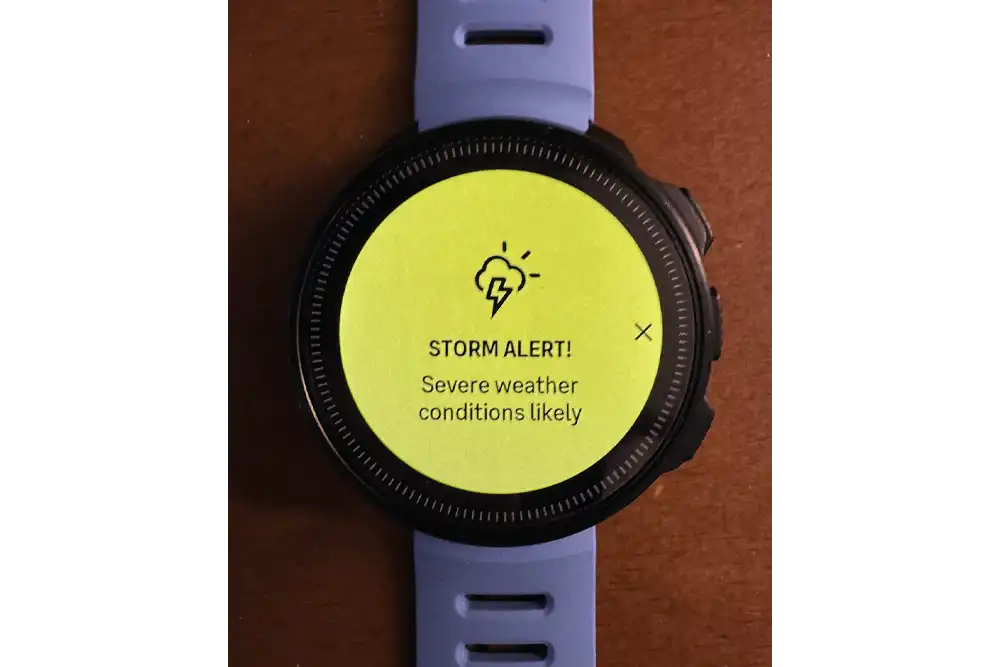

The Ocean is compatible with heart rate belts, Strava, TrainingPeaks and other apps, and when I first started wearing it I became obsessed with checking my heart rate. This is also possible while diving, but I didn’t bother as I wear it on top of my suit – and I don’t need a heart rate monitor to tell me I’m excited underwater!
The app tracks menstrual cycles, which is useful and relevant for diving. With the data I’ve inputted so far it predicts when I’m due on, so I can pack accordingly for upcoming trips. However, I have to input on day one of my period how long my period is going to be for, so the accuracy of this feature will only be apparent after putting in more data as time goes by.
For me, the Ocean is too big to wear in bed overnight, so although it has the capabilities it’s never going to know how I sleep.
In conclusion
The Suunto Ocean weighs in at 99 g/3.49 oz which isn’t light. If I were buying with the main aim of having a sports tracker, perhaps I would get something smaller and lighter than the Suunto Ocean and have a separate dive computer.
However, as my focus is on scuba diving, this is a superb, visually appealing computer, with wicked-cool added extras.
Key Features:
- AMOLED 50mm colour display
- Sapphire glass touch screen, large easy to use buttons
- Single and multi-gas dive modes with air and Nitrox support
- Monitor real-time gas usage when paired with Suunto Tank POD
- Buhlmann 16 GF algorithm. Customisable GF settings, no lock-out if ceiling breaks
- 40-60h dive battery life (26 days in time mode, 50 – 200h in training mode)
- 60m dive measurement profile, 100m water resistance
- GPS tracking
- Digital compass
- All the alarms and calculations expected of a high-end computer – plus weather forecasting and storm alarms
- Compatible with smartphones, heart rate belt, Suunto App, Strava, TrainingPeaks and more.
- Activity tracking: heart rate, steps, sleep, calories, recovery etc.
- Dedicated modes for 95 sports
- 32GB offline map storage – Free maps available
- Wifi, BLE and OHR, Dualband GNS
MSRP Suunto Ocean: £725
www.suunto.com
Related articles
- The best dive computers for 2024
- Review | Suunto’s new Zoop Novo dive computer
- Test review | Suunto EON Core dive computer
- DAN Europe and Azoth Systems’ microbubble study
- Review: Suunto Ocean dive computer - 13 January 2025
- ‘Toxic Trumps’ – venomous sea creatures and how to treat their stings - 18 November 2024
- Review: Alex Mustard’s 52 Assignments in Underwater Photography - 2 November 2024



